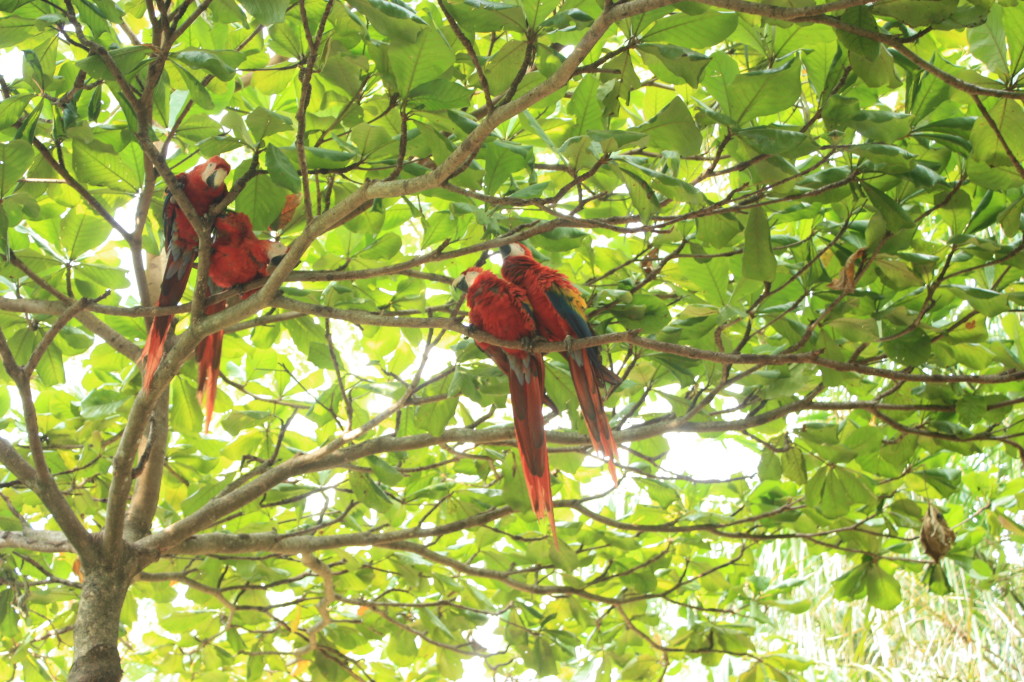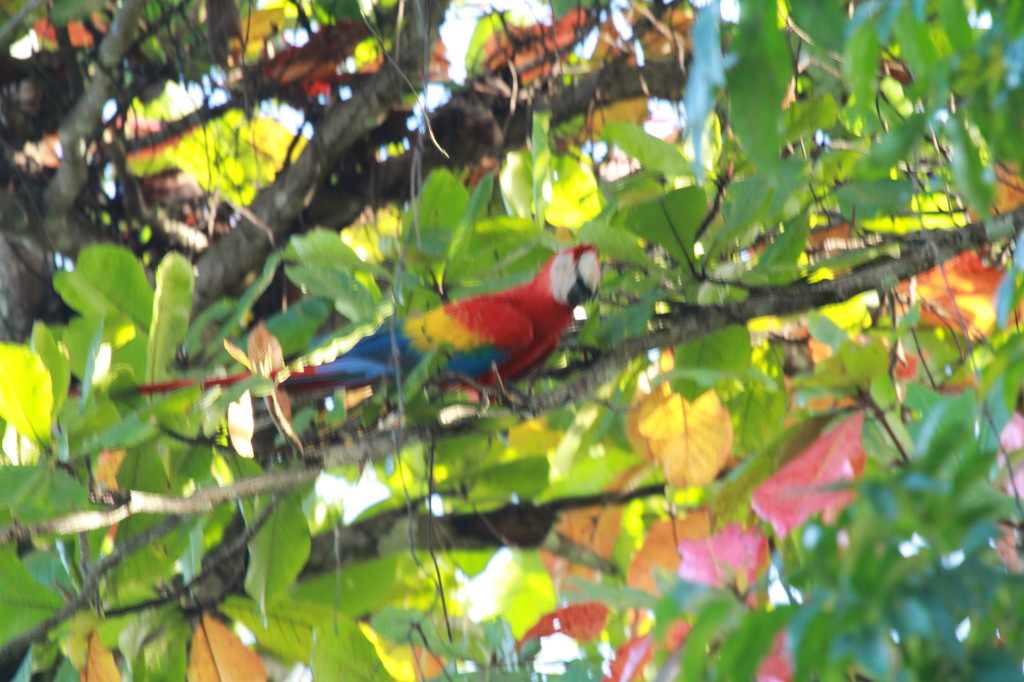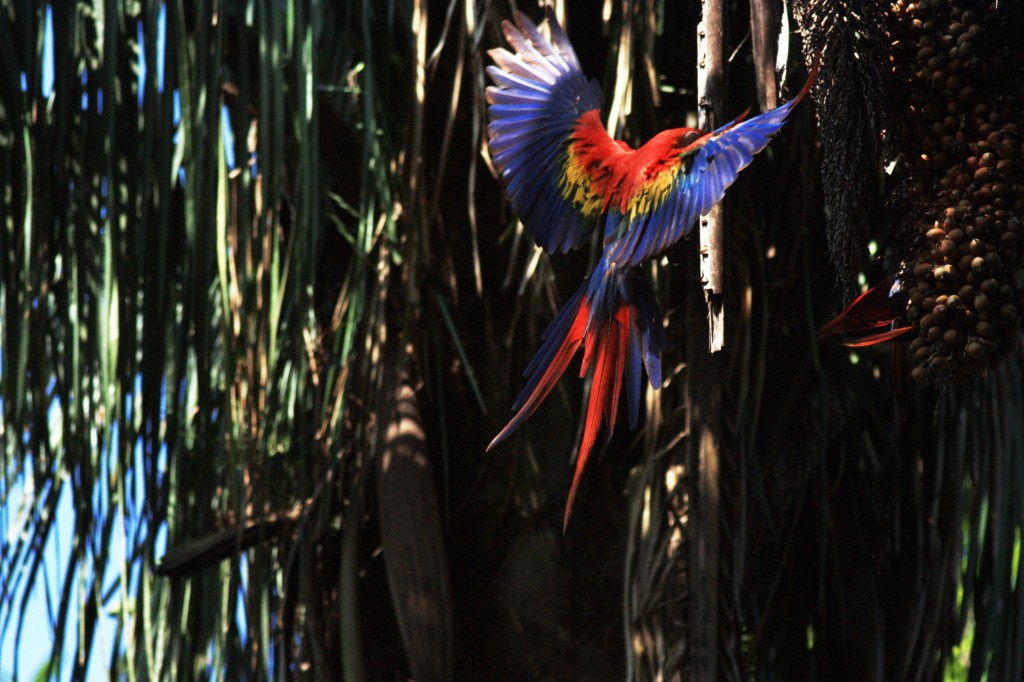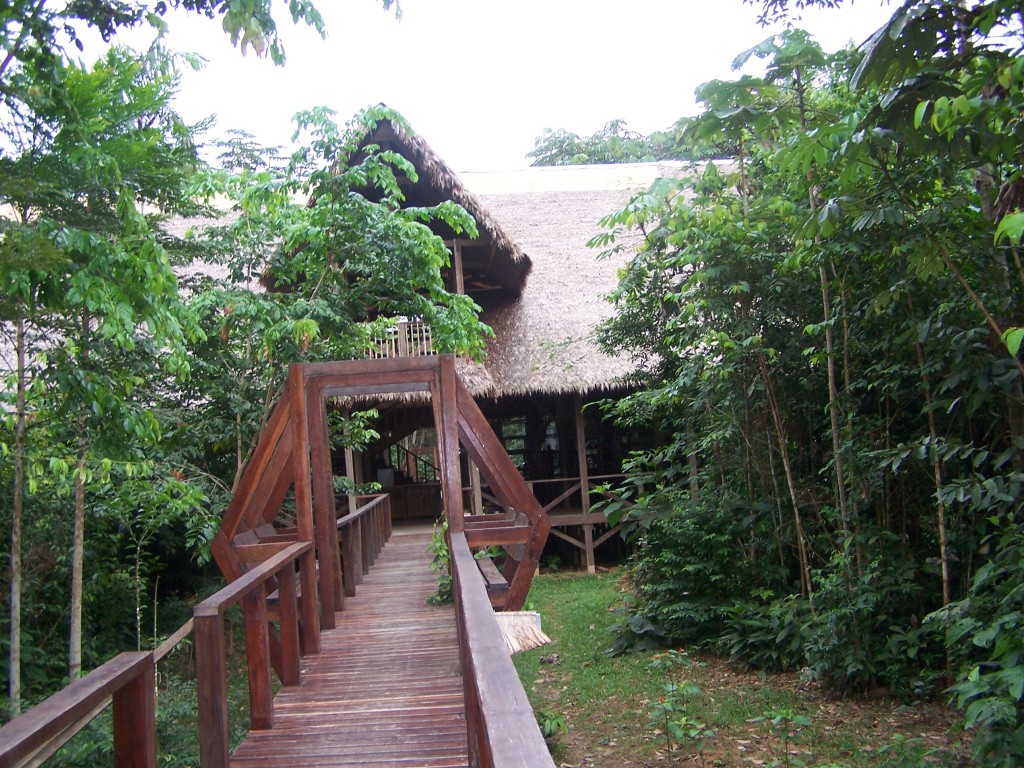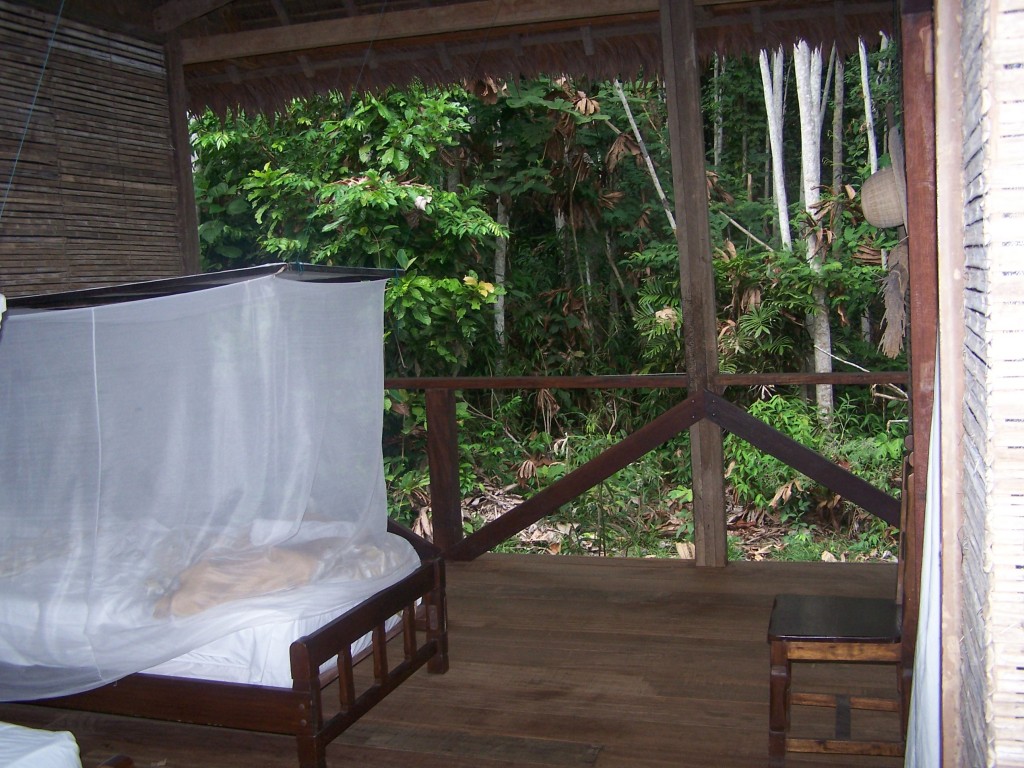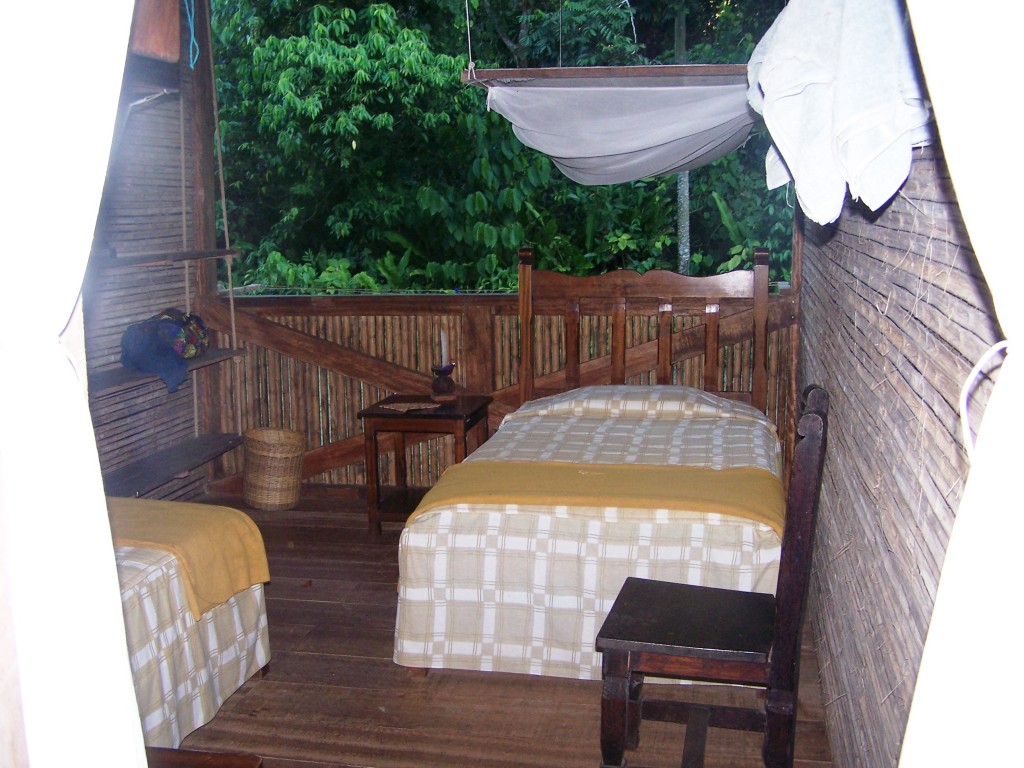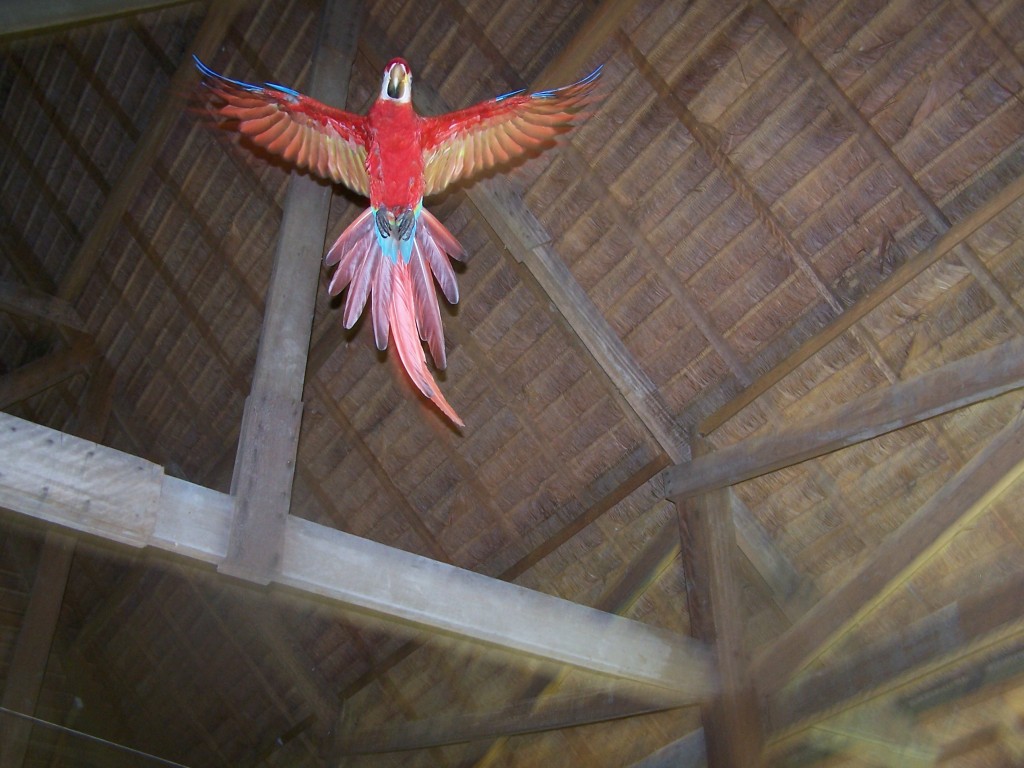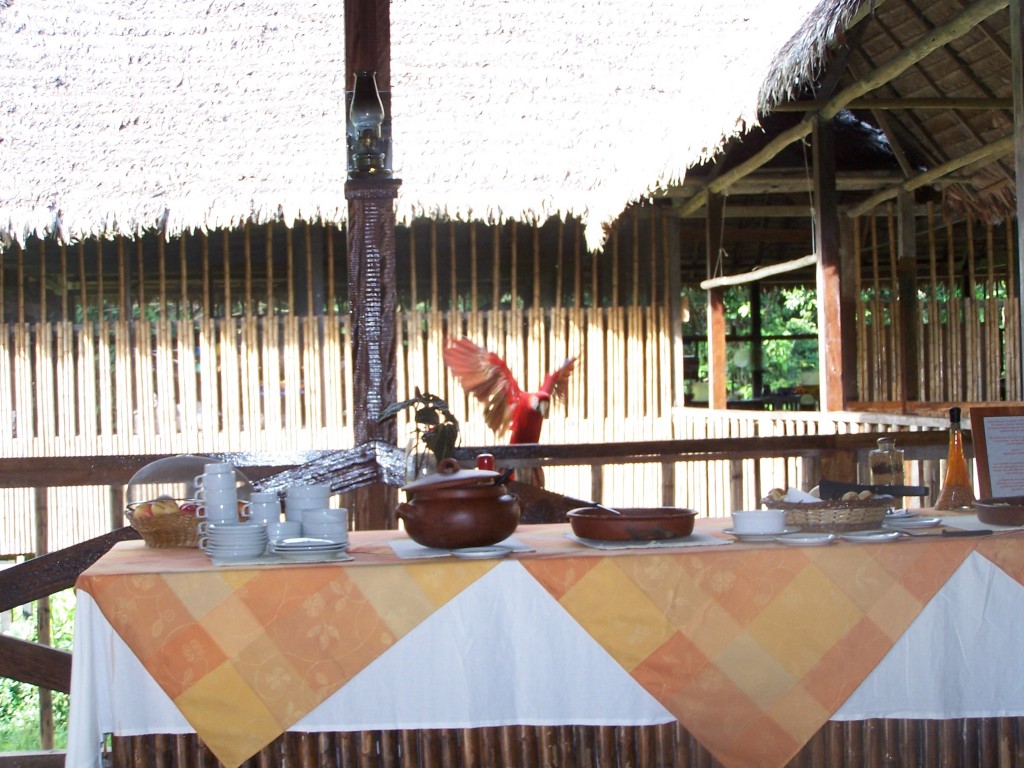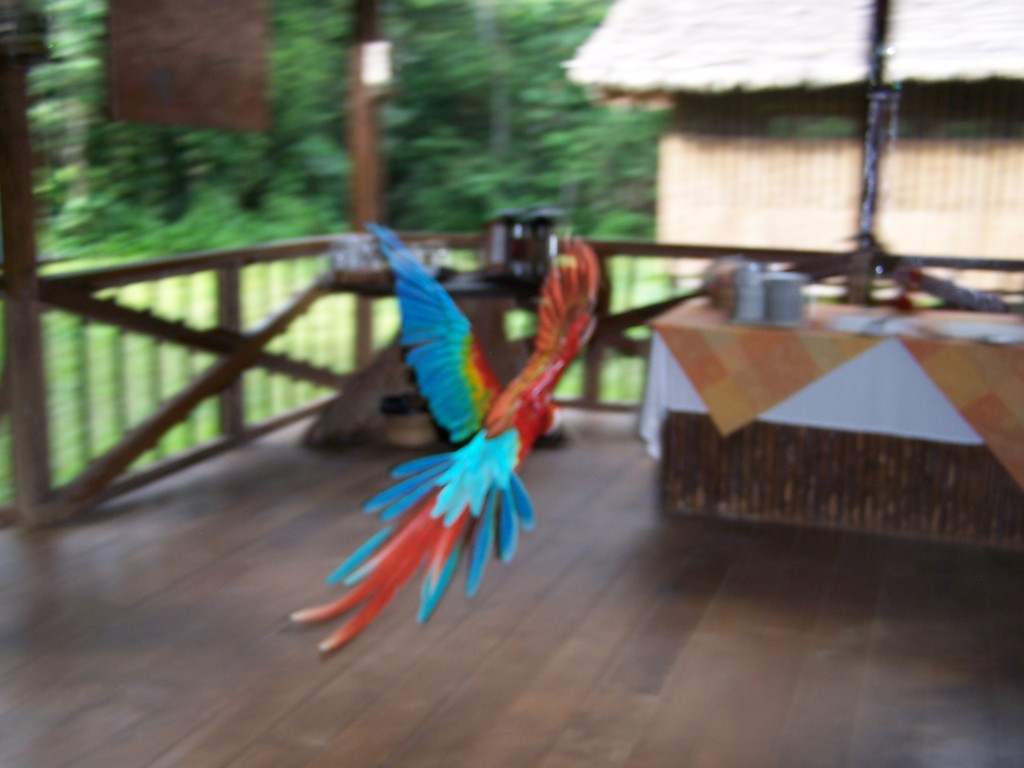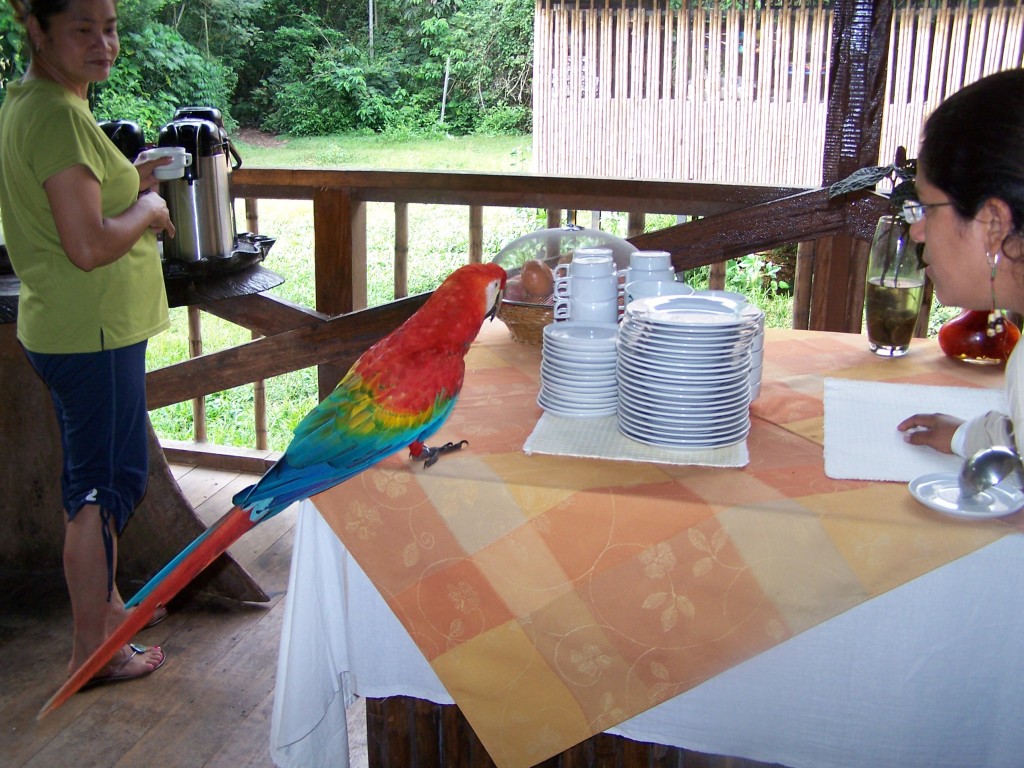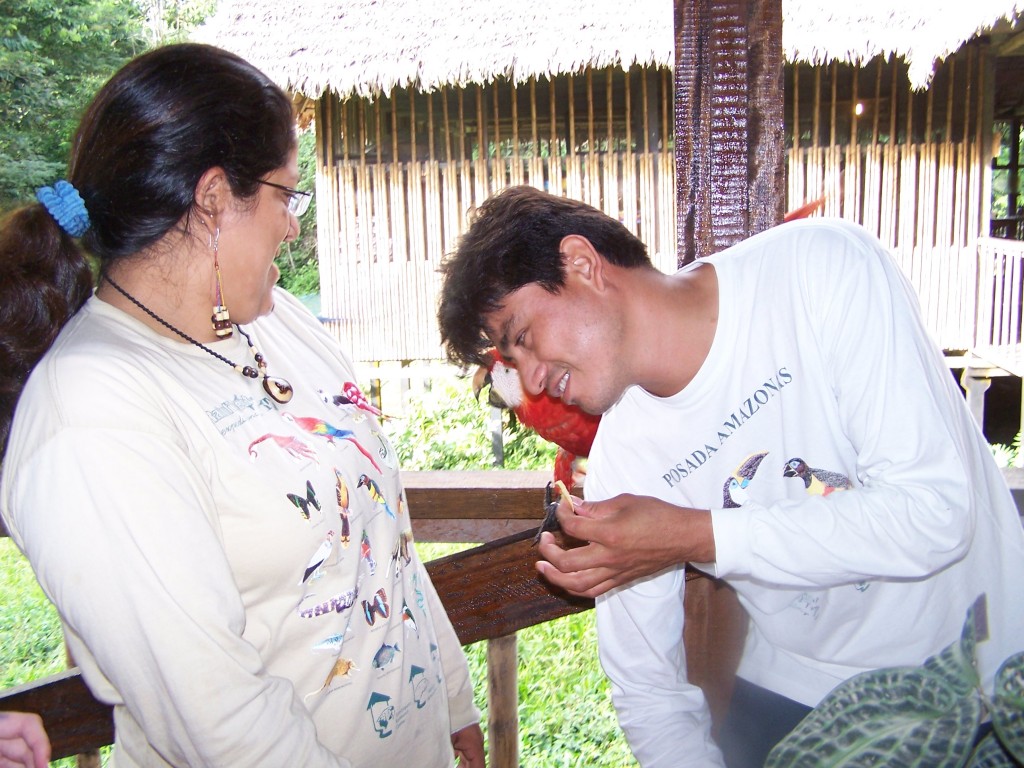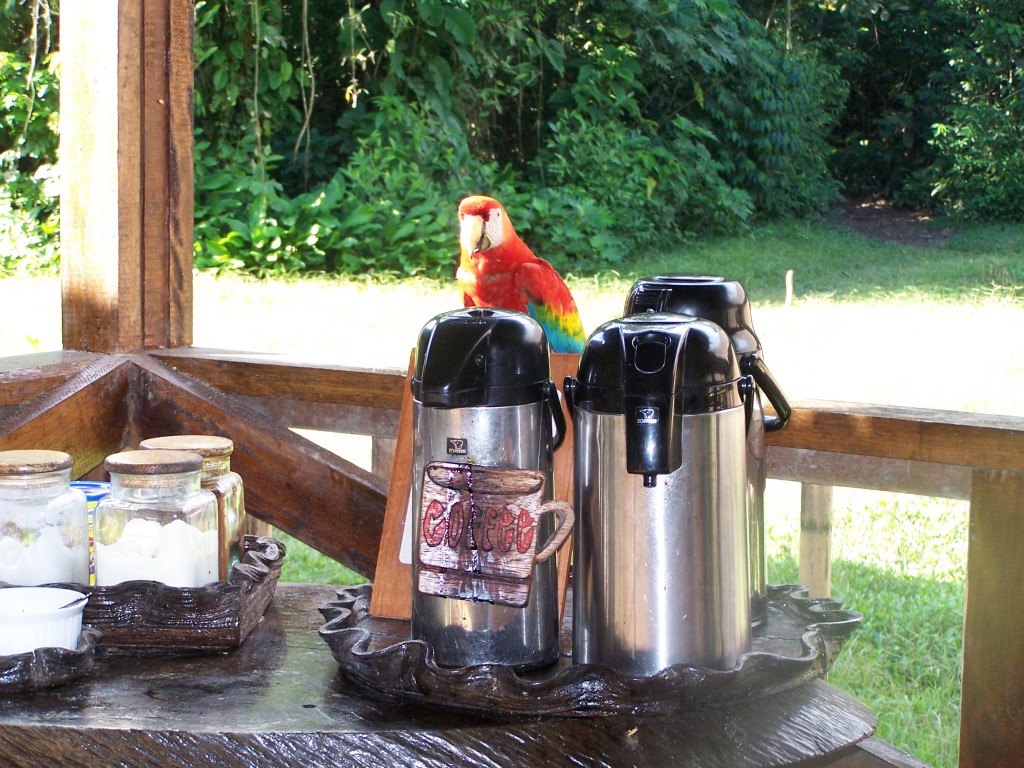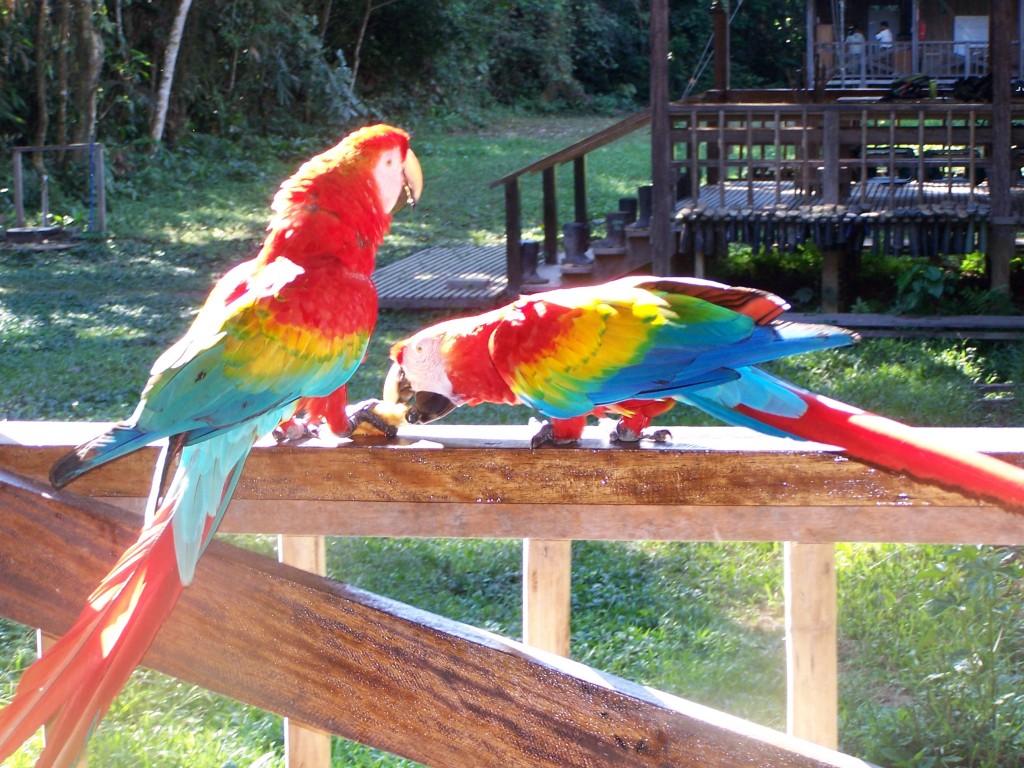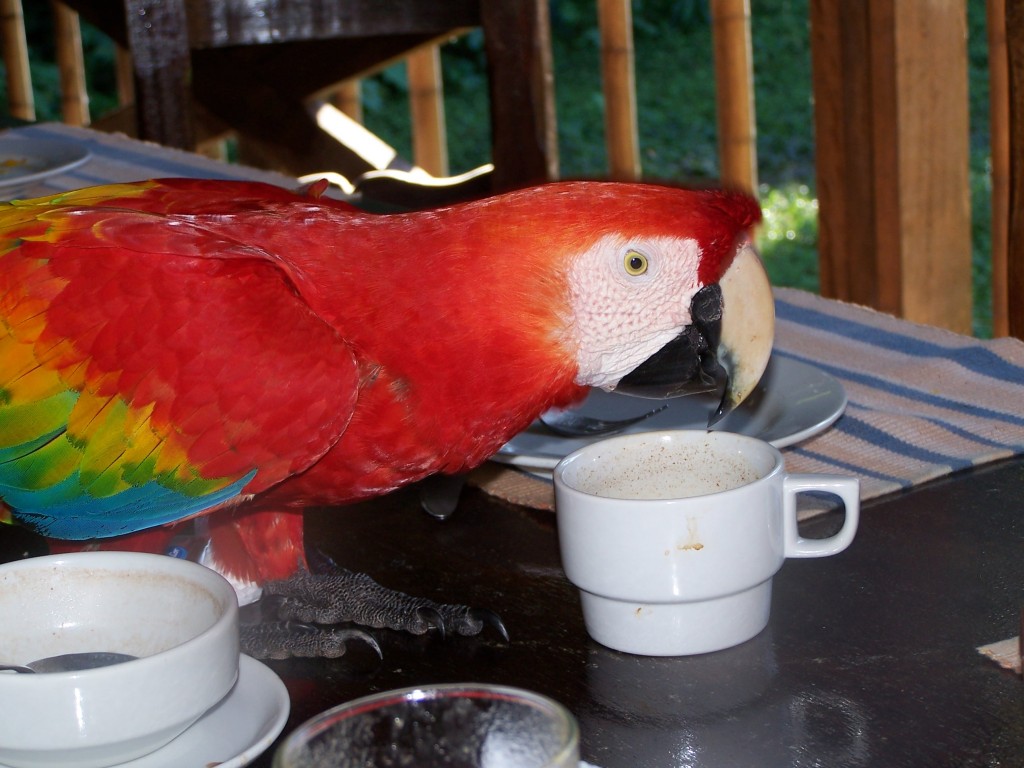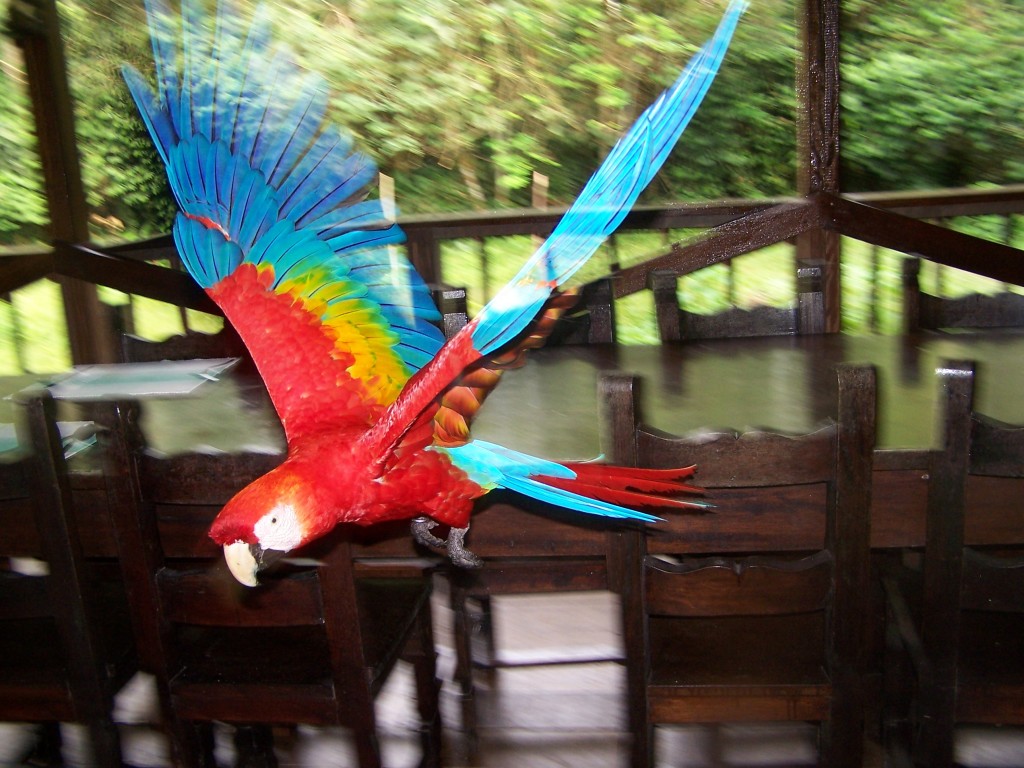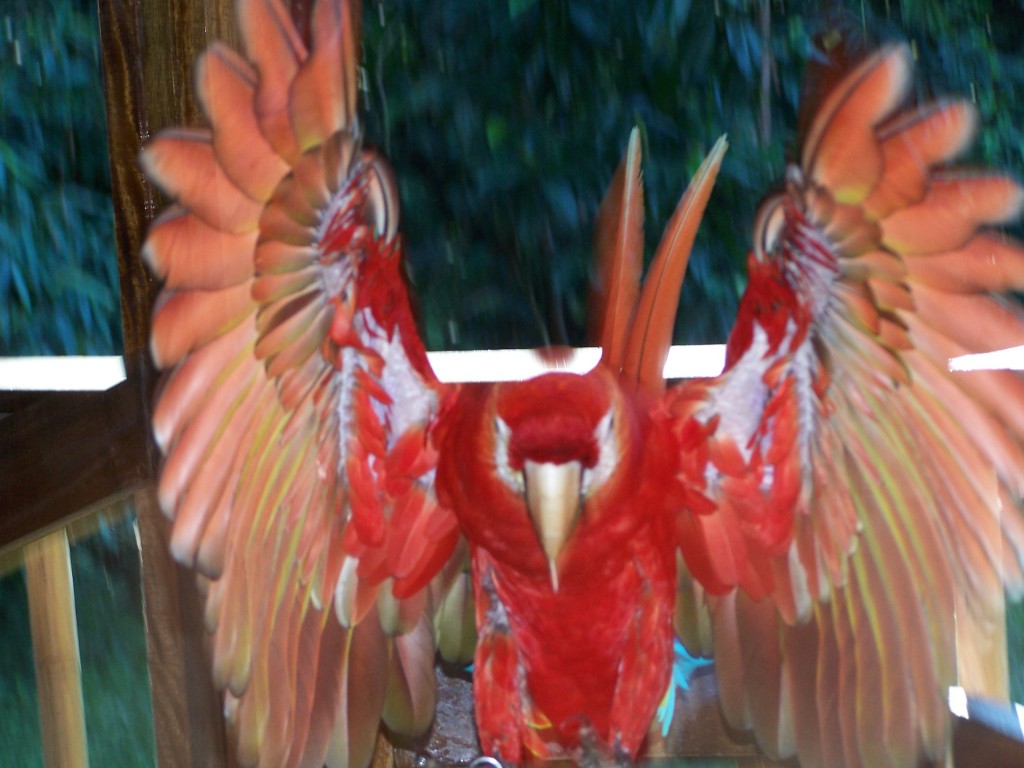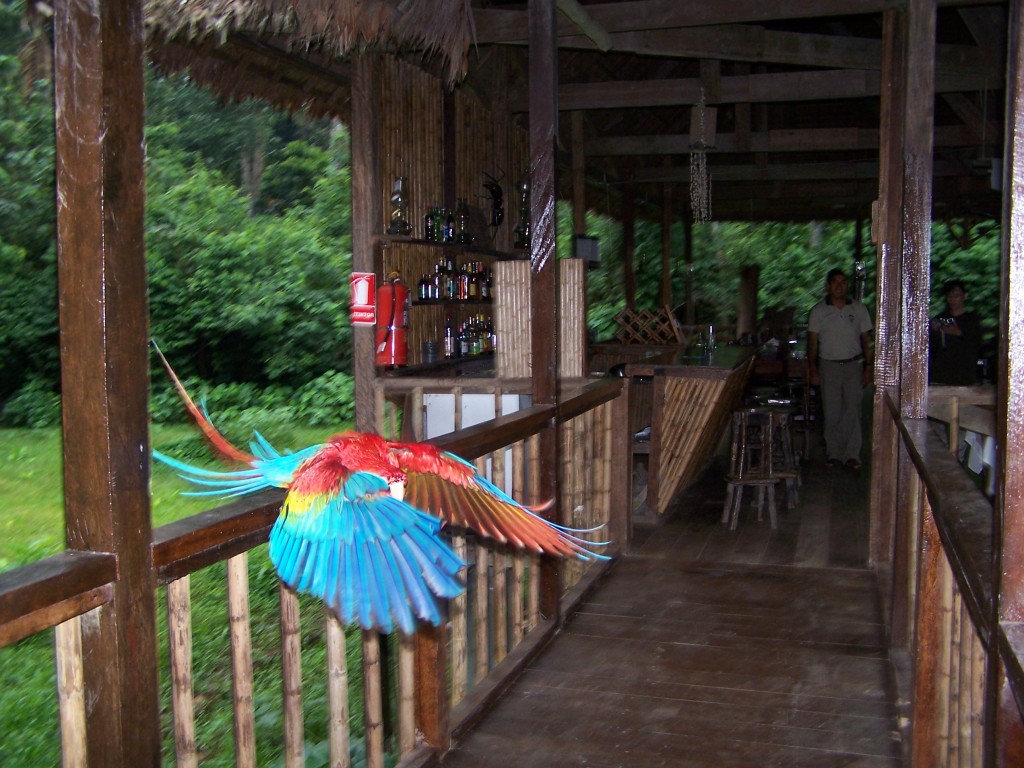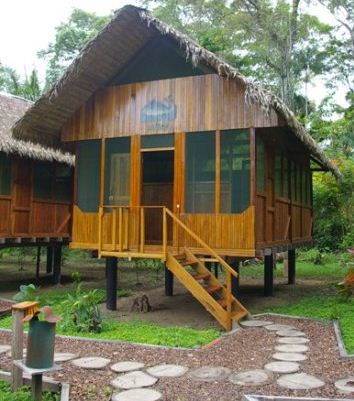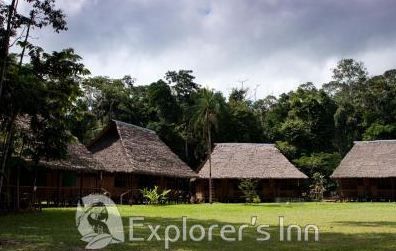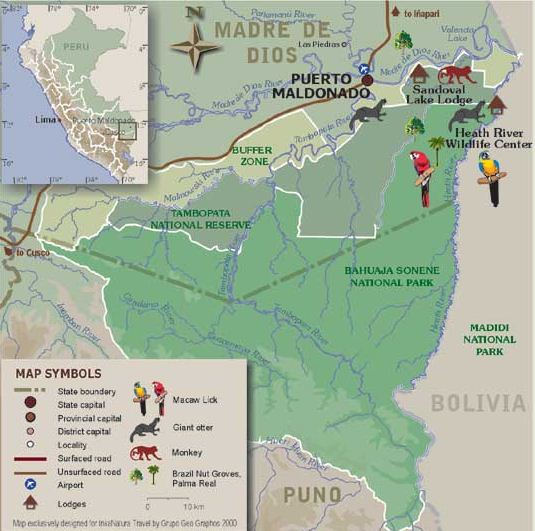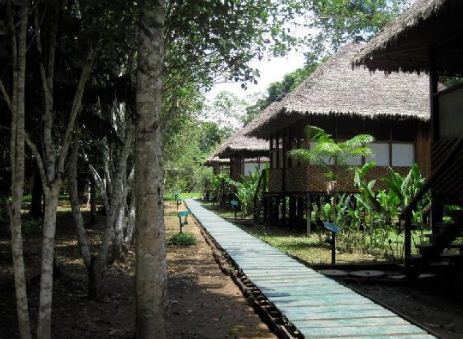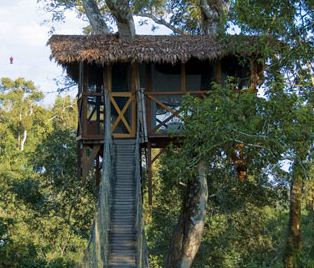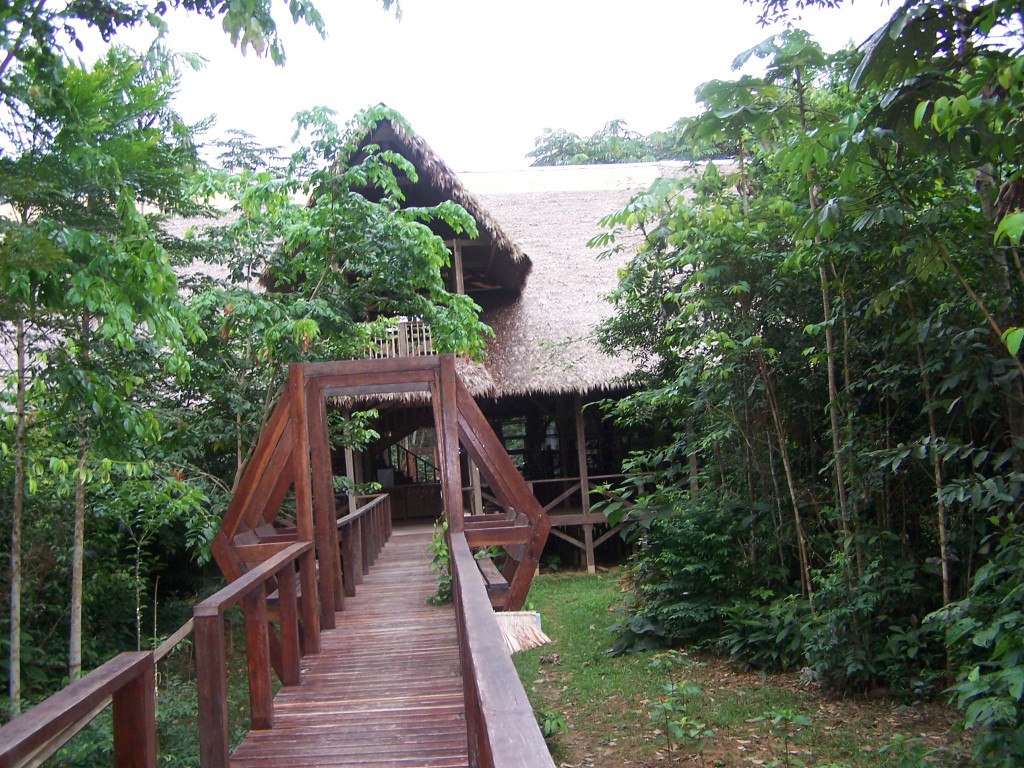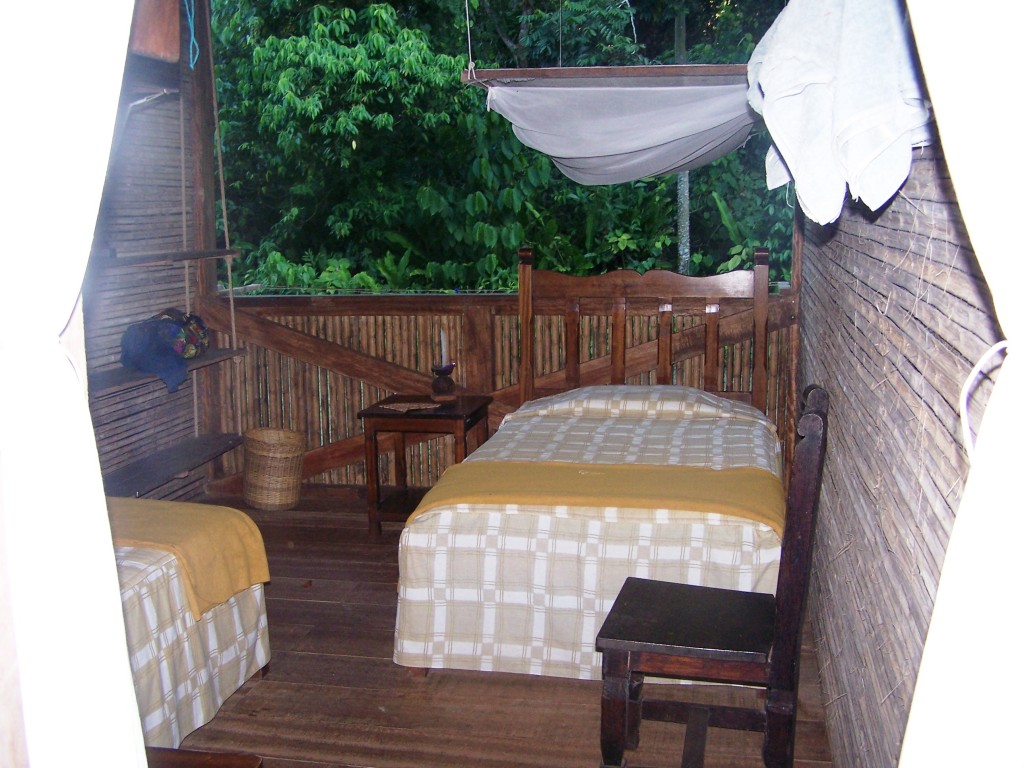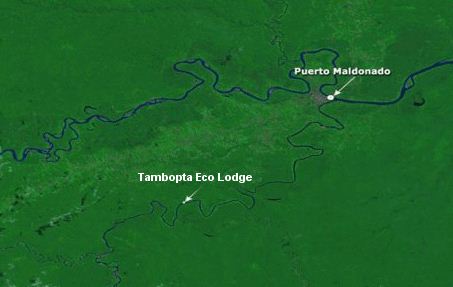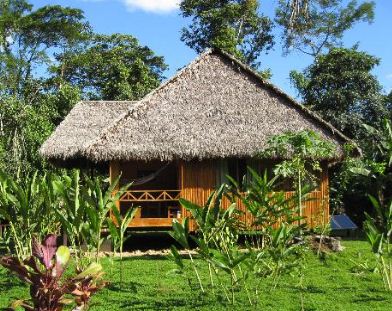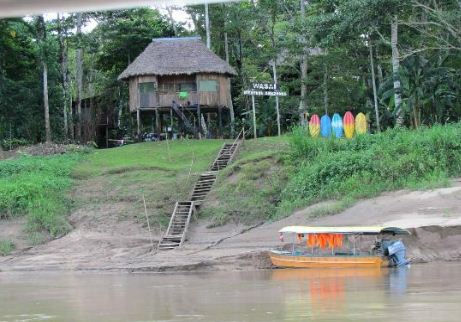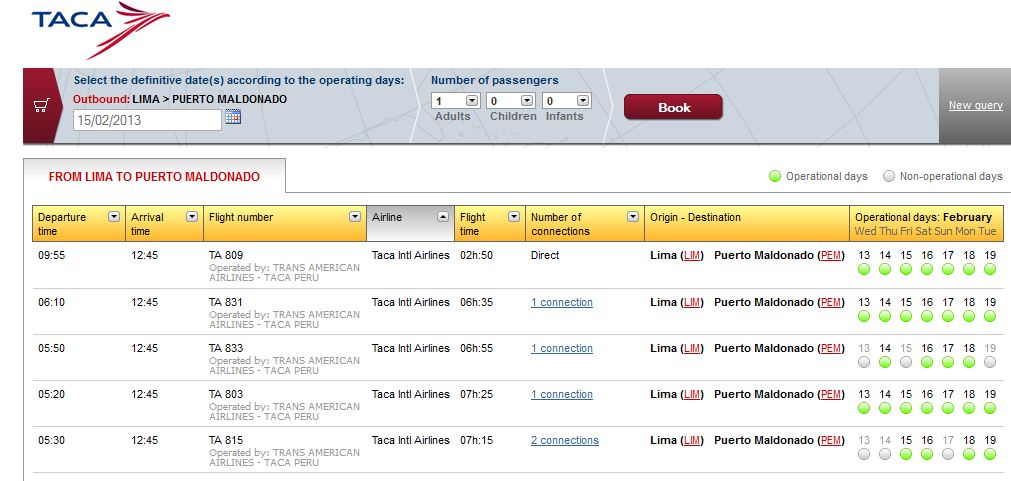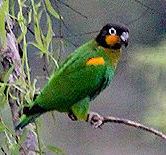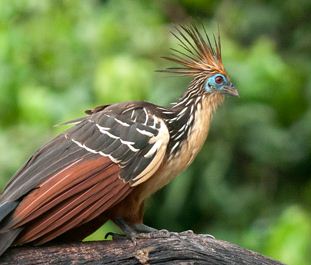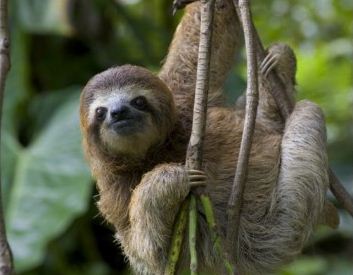Since we have the Olympics going on at this time I thought it might be fun to see if birding would make a good Olympic sport. I blogged about this Birding Rally Challenge last year so it’s nice to see how it turned out. Birding Adventures followed one team as they logged as many birds as possible. You’ll notice that they flew on One World member LAN for domestic sectors which is an excellent use of British Airways Avios at 4500 miles per sector. Would you like to take up the challenge? Start at the gateway of Lima and grab a North-South America award!
Tag Archives: Tambopata
The Tambopata Macaw Project Talk
Dr Donald Brightsmith, the manager of the Tambopata Macaw Project gives a lecture on the use of the clay lick by the various parrot species. He also shows how the researchers study the growth of the baby parrots.
If you would like to see this amazing place for yourself, start with my article here and also learn how the use of frequent flier miles can get you all the way to Puerto Maldonado so all you have to pay is the taxes and the cost of the Tambopata Research Centre package!
Scarlet Macaw (Ara macao)
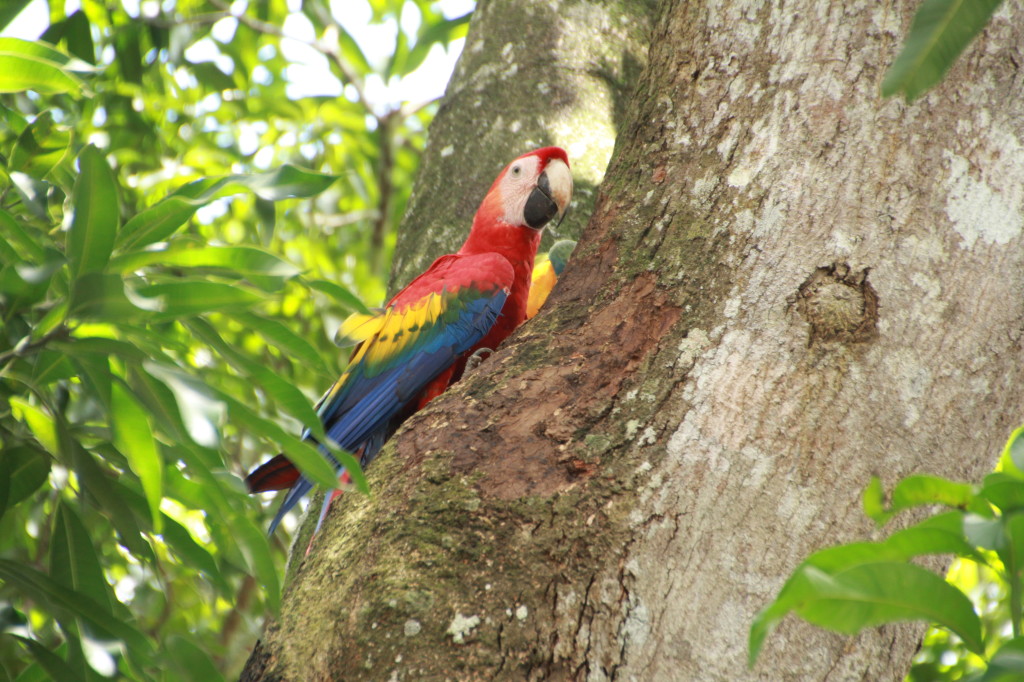
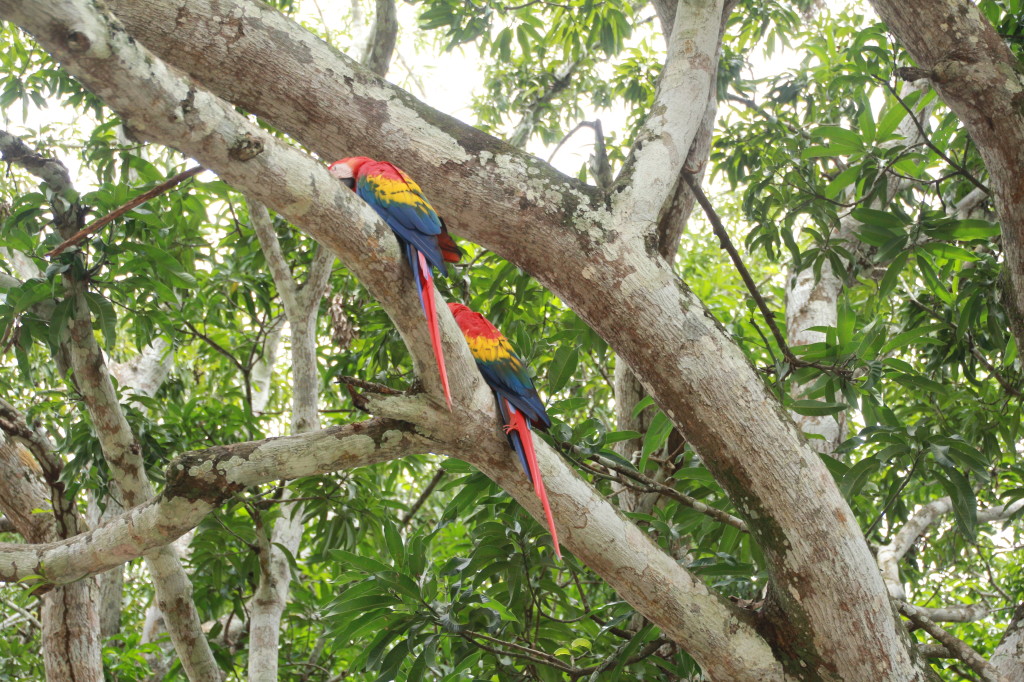 The Scarlet Macaw (Ara macao) is a large, red, yellow and blue South American parrot, a member of a large group of Neotropical parrots called macaws.
The Scarlet Macaw (Ara macao) is a large, red, yellow and blue South American parrot, a member of a large group of Neotropical parrots called macaws.
Two subspecies present differing widths in their yellow wing band:
- A. macao macao South American Scarlet Macaw, the nominate subspecies
- A. macao cyanoptera (Wiedenfeld 1995) North Central American Scarlet Macaw
The Central American scarlet macaw is larger and has blue on its wings instead of green.
It is native to humid evergreen forests of tropical South America. Range extends from extreme south-eastern Mexico to Amazonian Peru, Bolivia, Venezuela and Brazil in lowlands up to 500 m (1,640 ft) (at least formerly) up to 1,000 m (3,281 ft). It has suffered from local extinction through habitat destruction and capture for the parrot trade, but locally it remains fairly common. Formerly it ranged north to southern Tamaulipas. It can still be found on the island of Coiba. It is the national bird of Honduras.
Red – Carara National Park, Costa Rica
Purple – Tambopata, Peru
Blue – Alta Floresta/Cristalino, Brazil
Because the Scarlet Macaw has such a large range, it makes it easier to plan a trip to see them in the wild. I have personally seen them at Carara National Park in Costa Rica (use a Central American award), Tambopata in Peru (use a nothern South American award) and Alta Floresta & Cristalino in Brazil (use a southern South American award). Carara can also be accessed by cruise ship passengers, a great way to get your feet wet if you are new to bird watching! Book a Panama Canal cruise that stops in Puntarenas.
LEARN MORE ABOUT THIS PARROT
VIDEO
The Ara Project in Costa Rica releases some Scarlet Macaws who were bred to fly free and replenish the wild population.
The filmer cut off the best part, where the Chicos of Tambopata raid the breakfast table!
Inspiring The Next Generation
I make a point of “liking” all eco-tourism pages I find on Facebook and sometimes I see some great posts being shared. One thing I think is extremely important is to share our love of nature and a sense of stewardship of planet Earth with the next generation. They will inherit this world from us and pass it on to further generations in turn. Have a look at this high school group vising Tambopata in Peru and learning about their wonderful native species! Please share this post with any teenagers you know who may find this interesting. Tambopata has some voluntourism positions available from time to time, what better way to develop an everlasting appreciation of nature and wildlife! They also practice sustainable “green” tourism.
Maria Marta’s Jungle Photography
If these beautiful photos inspire you, visiting Tambopata is easier than you think. Start here!
The Enigmatic Macaws Of Tambopata
If a picture is worth a thousand words, how many words is this video worth? Sorry, they don’t allow embedding but click on the link below to watch it on Vimeo.
The enigmatic Macaws of Tambopata from Christian Declercq on Vimeo.
Every time I watch this I want to book the next flight back to Peru. If you are inspired, check out the other posts I have on how to see the Enigmatic Macaws of Tambopata for yourself!
Review of Refugio Amazonas and Tambopata Research Center
Birding As A Competitive Sport
Yay or nay-do birding competitions help or hinder eco-tourism? I think most birders have at least heard of (if not seen) the movie, “The Big Year”. If not, you can get it from Amazon.com (my link).
It’s an entertaining film but not my style at all. It just seemed that all they wanted to do was tick as many birds off a list as possible and beat other birders. They were all rushing around, tripping over each other and not taking the time to appreciate the birds.
And now there is a new competition in Peru. Part of it takes place in the Tambopata National Reserve so you can see my posts on how to get there. Birding Adventures has the video on YouTube. Interestingly, there are no women on any of the teams, I wonder why? I see plenty of female birders at eco-lodges. It did seem that the teams spread out so they weren’t all rushing around the same area at the same time and they did find some fantastic birds as you can see by the video. The men in the video all seem to be very experienced birders.
What are your opinions of birding as a competitive sport? Do you think it helps people become better birders and see more birds? Or do you think it gets people too focused on the competition when they should be appreciating nature? Please comment below!
Refugio Amazonas And Tambopata Research Center Lodge Reviews
Last week, I did a comprehensive post on all the lodges that are available in Tambopata National Reserve. I have only been to two lodges so in the other post, I was only able to assess the lodges by their websites and what other had said about them on Trip Advisor. Now I can give a more personal review. I am reviewing these two lodges together as they are part of the same group and if you visit Tambopata Research Center (TRC), you will have one night at either Refugio Amazonas or Posada Amazonas before and after the TRC trip because it is a LONG way down the river!
The journey to get there is half the fun and the birding begins right away! I have a full account on my main website Feathered and Free which actually reads more like a blog post so I won’t copy everything again. The service was amazing from the moment we were picked up at the airport in Puerto Maldonado, given our safety gear and leaf lunches to the nature walks and birding. Our guide, William was well trained, knew all the species and had a good eye for spotting them.
The lodges were both beautifully laid out and in harmony with the rain forest. What I really love is how the rooms are open to the jungle and you can see and hear everything that goes on 24 hours a day! Mosquito nets are provided and we found the beds very comfortable. People are warned not to leave personal effects and food out as macaws and monkeys can and will take anything they find. Meals are done buffet style and the food was excellent! We were amazed at how they could cook the variety of dishes they did out in the middle of the rainforest! There is a well-stocked bar and library where you could take a book and relax in a hammock during the siesta time.
Macaws can and do come into the rooms!
At TRC, there are several semi-tame Scarlet Macaws that were rescued from nests in cases where the parents weren’t feeding them. This often happens with a 2nd chick, the parents sometimes neglect the younger in favor of the elder one. These semi-tame macaws are called “Chicos”, and they would not be alive today if they hadn’t beed rescued and fed by researchers. Although they are totally wild and free, they have come to realize that free food is a good thing, so they usually come around at breakfast time hoping to steal as much from the buffet and people’s plates left unattended as possible. It’s quite hilarious as they are experts at faking out the lodge staff and work in teams to distract the staff while their mate swoops in to steal something!
VIDEO CLIPS!
TRC will give you a lifetime of memories and if you do stay here, the only thing you will regret is that you didn’t stay longer!
OTHER POSTS IN THIS SERIES
Tambopata Eco Lodges
When deciding on an eco-lodge, there are many things to consider as I wrote HERE. Once you decide on your priorities, Tambopata National Reserve has something for just about everyone! When reading Trip Advisor reviews, I tend to ignore anything written by someone who has only one review as they may not be completely objective. Pay attention to what species people report seeing at the lodges. Some people who seem to be ill-prepared will complain about mosquitoes and other bugs but hey, it’s a jungle out there! What do you expect? All the lodges will have bird species lists but they are accumulated over time so you want an idea what to expect from a shorter visit of 3-7 days.
In Alphabetical Order
This is one of the cheapest lodges in Tambopata so a good choice for budget travellers and backpackers. Not near a clay lick. This is not a place for serious birders but they seem to provide a nice jungle experience at a great price and the few reviews on Trip Advisor are positive.
You can’t go past a recommendation from National Geographic! Located in a national park that is the meeting of three major ecosystems: lowland Amazon forest, Andean foothills, and savanna. The rainforest retreat, built in part from certified forest wood, relies on solar panels and candles for light. It is a short walk from an oxbow lake, home to giant river otters, tiny tamarind monkeys, and hundreds of bird species. The lodge and its surroundings are pure Amazon, basic in design with fauna all around. Resident naturalists provide fine insight. 30 rooms; from $230, two-night minimum, all-inclusive.
They have a very impressive research and conservation program! From its inception in 1976, the Explorer’s Inn has played a central role in the effort to preserve the stunning natural environment of Peru’s Madre de Dios province and to support research in the field of tropical rainforest conservation biology. Our company was among the first to adopt the practice of ecotourism in the region and promote the concept of conservation to its communities. Indeed, it is largely thanks to the efforts of many people at the Explorer’s Inn, including the staff and numerous scientists who have conducted groundbreaking fieldwork from here, that Tambopata National Reserve and Bahuaja-Sonene National Park were established by the Peruvian government, protecting more than 1.3 million hectares of Amazonian rainforest. The Explorer’s Inn donates on average one quarter of its bed/nights to our Resident Naturalist Programme, allowing researchers at the Masters level and above to carry out fieldwork in the life sciences, including botany, ecology, entomology, herpetology, primatology, and ornithology. In addition to their academic research, our Resident Naturalists have also become involved in conservation work including through the Tambopata Reserve Society (TreeS), a NGO founded by former Resident Naturalists in the UK, raising funds and providing expert advice to local communities on sustainable development within the rainforest.
The 7 day birding tour looks really good although you don’t get guided walks with the naturalists every day, some days are on your own to explore. The prices are some of the lowest for this area so you are getting a bargain! This blog has a great report of a trip there in August 2012 with lovely photos but they did have some complaints about not having access to the top of the canopy tower. I would email Explorer’s Inn and make sure that you would have full access to the Canopy Tower before booking. With rave reviews on Trip Advisor, I’d say you can’t go wrong here, especially for the price!
They have two lodges in the Tambopata area: Sandoval Lake Lodge (SLL) and the Heath River Wildlife Center (HRWC). The location makes it ideal for a shorter trip, they even have a one-night trip; but in my opinion if you are going to fly all the way to Peru, stay at least 4 nights to see more wildlife! The Heath River features the world’s most accessible large macaw lick, which has registered up to 260 large macaws in one day, making it one of the five largest recorded macaw licks in the world.
Though all five of these licks are spectacular, the Heath Lick is by far the most economical to visit, making it ideal for a short Amazon itinerary to combine with the Inca sites of Cusco and Machu Picchu. The Heath lick is the only one of the five that can be reached the same day that you fly by jet from Cusco, thus saving one or two nights over other licks. They have special birding tours led by some of Peru’s top ornithologists. Although we didn’t get to visit HRWC on our last trip, this is definitely one I would consider in conjunction with TRC to get a wider perspective of Tambopata. People on Trip Advisor speak highly of both Heath River Wildlife Center and Sandoval Lake Lodge.
The most expensive and luxurious of the Tambopata eco-lodges, Inkaterra even has a spa package! This probably won’t sway the more dedicated birders unless you have a spouse who is reluctant to visit the rainforest and needs some persuading. This place would suit honeymooners who want a romantic rainforest retreat and aren’t too fussed about what wildlife they see. They also accept families and cater to children from 5 years and up. The canopy treehouse is beautiful! This is one of three lodges recommended by National Geographic.
They have a wide range of guides who seem well qualified but you should request one who specializes in parrots as not all of them do. Based on the location they don’t seem to be near any macaw clay lick. “From Puerto Maldonado Airport, check-in at the Inkaterra Butterfly House, then 10 minute transfer to the Jetty Port for a 45-minute boat transfer along the river to the Lodge.” I would recommend this lodge for honeymooners and soft adventure but not for serious birders. Reviews on Trip Advisor are mixed, some love it, some don’t.
This was my choice for the trip we did in 2007 and I couldn’t have been happier! They have 3 wonderful lodges (which I will write separate reviews for): Refugio Amazonas, Posada Amazonas and the world-famous Tambopata Research Center which is located near the largest known macaw clay-lick in the Amazon. They have a wide variety of packages at surprisingly reasonable costs, including one especially for parrot lovers! We did the 5 day 4 night package in 2007 but if we went back, I would want the Parrot Lover’s package for sure. The one drawback to the shorter packages is you may get people with only a passing interest in birdlife and would rather chatter amongst themselves than stay silent and listen for bird calls. We did have a problem with a chatty couple in our group so next time, I would want to be with people who are focused on the birds. Recommended by National Geographic!
Sustainability is a top priority here. Because the locals are co-owners of the lodges, they are highly motivated to preserve and protect their wildlife. TRC is home to the Tambopata Macaw Project which has researchers and field biologists studying the birds. Many of the in-house guides will be volunteers with the project who have been there a few months and had intensive training on the local wildlife. Since we stayed here, I will go into more detail in the individual lodge reviews. (link to follow) I am not the only one who loves these lodges as you can see on Trip Advisor’s reviews of Refugio Amazonas, Posada Amazonas and Tambopata Research Center.
Founded back in 1991, the Tambopata Eco Lodge is one of the most established eco-tourism lodges on the banks of the Tambopata River. There are now a total of nine rainforest lodges in the Puerto Maldonado area, reinforcing the status of the region as one of the major rainforest eco-tourism destinations in South America.
With a capacity of 59 it is also one of the smallest lodges, which is how we intend to keep it. Smaller groups, we believe, contribute to a more fulfilling visit and reduce the impact on the many species of fauna that abound in the surrounding forest.
The lodge employs around twenty Peruvian staff, the majority of whom are resident in Puerto Maldonado. In addition, there are a number of naturalist guides, both from Peru and abroad, who are at your service throughout your stay. As well as guiding and introducing visitors to the many marvels of the forest, a number are undertaking research projects, thereby contributing to a greater ecological understanding of the area. The package rates are comparable to other lodges in the area. I can’t see where they have any special research programs going on or where their naturalist guides are from. They do get excellent reviews on Trip Advisor but seem more suitable for a general rainforest experience than for people who are interested in macaws and other parrots.
They have excellent last-minute bookings at very good prices which will appeal to backpackers who don’t like to book things in advance. One thing that stands out is that there is a 4km hike to the lodge but they provide porters. They do include a visit to Macaw Clay Lick “El Chuncho” in the Bahuaja-Sonene National Park in their 3 night 4 day program. They also offer educational programs and accept volunteers. Very positive reviews on Trip Advisor and several people recommend the guide Jorge.
****************************************************
There are probably other lodges that I didn’t get a chance to cover. As you can see, some lodges will appeal to budget travelers or backpackers who just want a rainforest experience and don’t have their hearts set on seeing any species in particular. Other lodges cater to more serious birders and will do all they can to help you find the species you want to see. Of course no wildlife is guaranteed but the macaw clay licks are a pretty sure bet to see LOTS of macaws and other parrots!
If you find any other lodges and would like my advice about it based on how they present themselves online, please give the link in the comments. My pick if we were to go back—hands down Tambopata Research Center! We loved it the last time and I love that they are so committed to conservation. Heath River Wildlife Center and Explorer’s Inn also are stand-outs by my priorities of conservation efforts, birding and macaw clay lick. None of these are the cheapest lodges, nor are they the most expensive but I don’t think for a serious birder Tambopata is a good place to economize.
OTHER POSTS IN THIS SERIES
Tambopata National Reserve
WHERE IS IT EXACTLY?
In the previous post of this series, we have used miles and points to get from your hometown to Lima, Peru and have an overnight stay to get you refreshed before you arrive in our destination, the Tambopata National Reserve aka Tambopata-Candamo National Reserve. So where exactly is the Tambopata National Reserve? As the crow, Macaw flies, it’s not really that far from Cuzco, and it’s close to the border with Bolivia.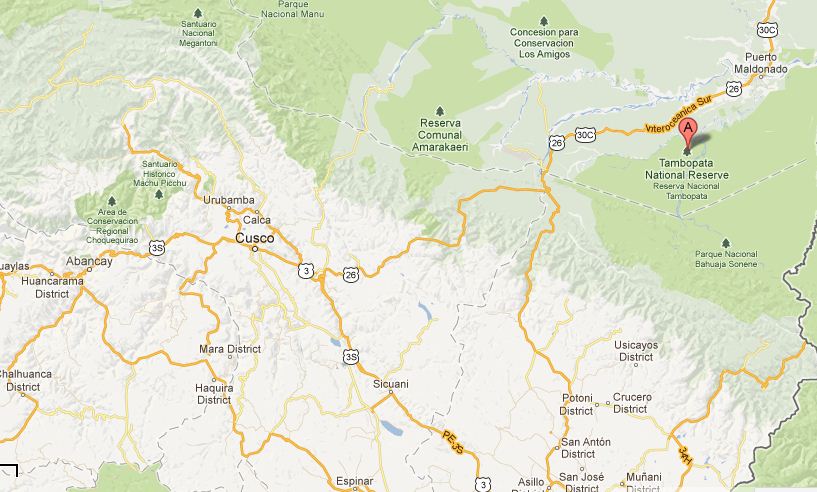
HOW DO YOU GET THERE?
To get here from Lima, most people will fly in from Lima or Cuzco. If you are going to do a stopover in Cuzco, I advise you do it on the return. Cuzco is at very high altitude and unless you are already acclimated to high altitudes, you may suffer from altitude sickness which can leave you feeling lethargic and ill for days. There are medicines to combat that, but I prefer to err of the side of caution as I know that I personally don’t deal well with high altitudes. Here are the flight schedules on LAN Peru (One World) and Avianca/Taca (Star Alliance). If you used One World or Star Alliance miles, these flights will have been included in your ticket. If they weren’t, this is a typical situation when it is nice to have some BA Avios on hand for a cheap 4500 Avios redemption. Later on, I will go into more detail about this but you can always ask in the comments if you need info urgently. Depending on the rules of your airline’s FF program, you may be able to book the whole trip as a RT from your home to Puerto Maldonado with a stop in Cuzco or as an open jaw Home-Puerto Maldonado /-Cuzco-Home and buy a separate ticket between Puerto Maldonado and Cuzco. As you can see, most flights are very early in the morning, making it well worth getting those Wyndham points so you can use the airport hotel. I won’t show fares here as they vary widely but be aware that the cheapest fares are usually for Peruvians only. Use miles!
BUT IT’S SO CLOSE TO CUZCO, CAN’T I TAKE A BUS?
Yes, you can take a bus between the two and many backpackers do choose this option because buying flights can be very expensive. The trip will take between 12-20 hours depending on if you go in the rainy season or not. Just be grateful you have miles! 😀
WHAT PARROTS CAN I SEE IN THE TAMBOPATA NATIONAL RESERVE?.
Blue-and-yellow Macaw (Ara ararauna)
Scarlet Macaw (Ara macao)
Red-and-green Macaw (Ara chloroptera)
Chestnut-fronted Macaw (Ara severa)
Red-bellied Macaw (Orthopsittaca manilata)
Red-shouldered Macaw (Diopsittaca nobilis)
White-eyed Parakeet (Aratinga leucophthalmus)
Dusky-headed Parakeet (Aratinga weddellii)
Peach-fronted Parakeet (Aratinga aurea)
Black-capped Parakeet(Pyrrhura rupicola)
Blue-winged Parrotlet (Forpus xanthopterygius)
Dusky-billed Parrotlet (Forpus sclateri)
Cobalt-winged Parakeet (Brotogeris cyanoptera)
Tui Parakeet (Brotogeris sanctithomae)
Amazonian Parrotlet (Nannopsittaca dachilleae)
Scarlet-shouldered Parrotlet (Touit huetii)
White-bellied Parrot (Pionites leucogaster)
Orange-cheeked Parrot (Pionopsitta barrabandi)
Blue-headed Parrot (Pionus menstruus)
Yellow-crowned Parrot (Amazona ochrocephala)
Orange-winged Parrot (Amazona amazonica)
Mealy Parrot (Amazona farinose)
WHAT ABOUT OTHER BIRDS?
WAY too many to copy here, but I found a good comprehensive list online. Some of the most highly sought-after birds are the toucan species: Channel-billed and White-throated Toucans, Chestnut-eared Aracari, Curl-crested Aracari, Emerald Toucanet and the Golden-collared Toucanet. Raptors include: Harpy Eagle, Bat Falcon, Gray-lined Hawk, Great Black-Hawk and Roadside Hawk. And there there are numerous species of Tinamou, Caracara, Owls, Nightjar, Kingfishers, Tanagers, Mot-Mots, Trogons and the enigmatic Hoatzin (Opisthocomus hoazin) just to name a few!
MAMMALS
Monkeys are always popular and fun to watch. Tambopata has several species: Brown Capuchin, Dusky Titi Monkeys, Red Howler Monkeys and White-bellied Spider Monkey. If you are REALLY lucky, you may see a Jaguar! You are much more likely to see Giant River Otter, Capybara, Brown Agouti, Armadillos, Peccaries and Brown-throated three-toed sloth. A more comprehensive list can be found here.
In the next post, I will show you what kinds of lodges are in the Tambopata National Reserve, how to choose one and show options for all budgets.
OTHER POSTS IN THIS SERIES
Review of Refugio Amazonas and Tambopata Research Center

